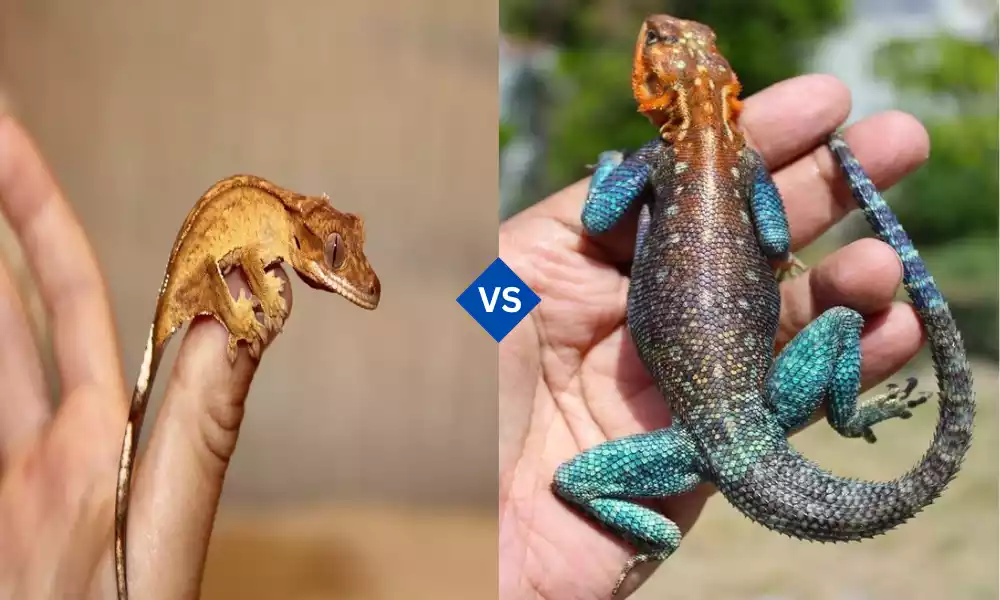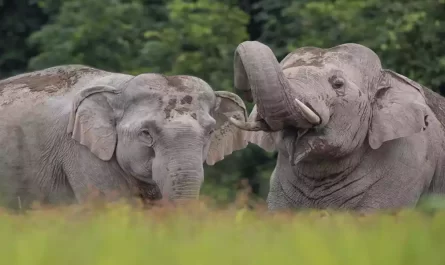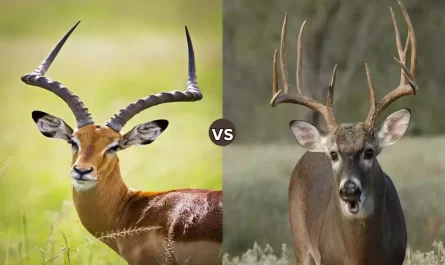Geckos and lizards are both members of the Squamata order, but they have distinct differences. Geckos are known for their unique vocalizations and the ability to climb smooth surfaces, thanks to special adhesive pads on their feet.
They are often nocturnal and have large, expressive eyes adapted for night vision. Lizards, a more diverse group, vary greatly in size, habitat, and behavior, with features like powerful limbs for burrowing or climbing, and in some cases, the ability to regenerate lost tails.
Definition of Gecko
A gecko is a small to medium-sized lizard belonging to the family Gekkonidae, found in warm climates throughout the world. They are distinctive for their vocalizations, which they use to communicate with other geckos.
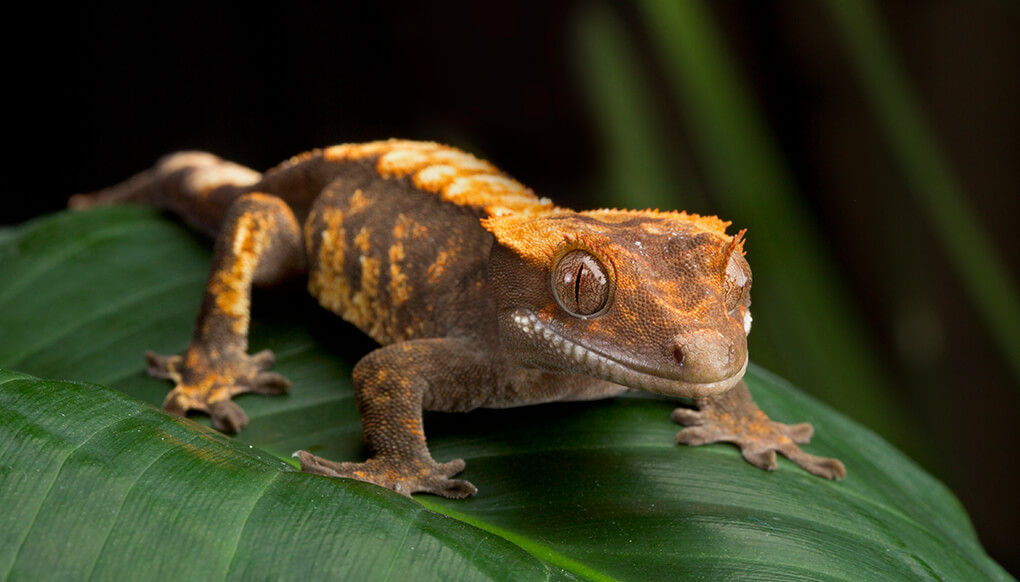
Geckos are renowned for their remarkable ability to climb and adhere to a variety of surfaces, including vertical walls and even ceilings. This ability is due to the special adhesive pads on their feet, composed of tiny hair-like structures.
Most geckos have large, sensitive eyes, giving them excellent night vision. They play an important ecological role as insect predators and are also popular in the pet trade.
Types of Gecko
There are over 1,500 species of geckos, each with unique characteristics. Here are a few notable types:
- Leopard Gecko (Eublepharis macularius): Popular as pets, they are known for their distinctive spotted patterns and the ability to vocalize.
- Crested Gecko (Correlophus ciliatus): Recognizable by the fringed crest running over their eyes and down their necks, they have become popular in the pet trade.
- Tokay Gecko (Gekko gecko): One of the largest gecko species, known for their striking blue-grey bodies with orange spots and loud mating calls.
- Day Geckos (Phelsuma spp.): Characterized by their bright green color, these geckos are diurnal and often found in Madagascar and neighboring islands.
- Common House Geckos (Hemidactylus frenatus): Widespread in warm regions, they are often seen on walls and ceilings in and around houses.
- Gargoyle Gecko (Rhacodactylus auriculatus): Named for their knob-like protrusions on their head, resembling gargoyles, these geckos are another favorite among pet owners.
- Mourning Gecko (Lepidodactylus lugubris): Interesting for being parthenogenetic, meaning the females reproduce without males.
- Gold Dust Day Geckos (Phelsuma laticauda): Notable for their bright green color and gold speckles, they are often found in Madagascar and the Comoros.
- Madagascar Ground Gecko (Paroedura pictus): Known for their ground-dwelling habits and distinctive patterning, often kept as pets.
- Flying Gecko (Ptychozoon kuhli): Famous for their ability to glide, they have webbed feet and flaps of skin along their bodies to help them navigate through the air.
These are just a few examples, and the diversity among geckos is vast, with species adapted to a wide range of environments and lifestyles.
Characteristics of Gecko
Geckos, a distinctive group of lizards, possess several unique characteristics:
- Adhesive Toe Pads: Most geckos have specialized toe pads that enable them to climb smooth and vertical surfaces, and even walk upside down on ceilings. These pads are covered with tiny hair-like structures called setae, which create a molecular attraction with surfaces.
- Vocalization: Unlike most lizards, many gecko species can produce sounds, ranging from chirps and clicks to barks, which they use for communication, especially during mating and territorial disputes.
- Nocturnal Lifestyle: The majority of gecko species are nocturnal, and active during the night. This is reflected in their large, sensitive eyes, which are well-adapted for seeing in low-light conditions.
- Regeneration: Like many lizards, geckos can autotomize, or self-amputate, their tails as a defense mechanism. The tail will eventually regrow, although it may differ in appearance.
- Soft Skin: Geckos generally have softer, more delicate skin compared to other lizards, often covered in small bumps or granules.
- Wide Diet Range: Most geckos are insectivorous, feeding on various insects and invertebrates. Certain larger species could also devour small mammals and birds.
- Egg Laying: Most gecko species lay eggs. Interestingly, some species are parthenogenetic, meaning the females can reproduce without male fertilization.
- Diverse Habitats: Geckos are found in a wide range of environments, from rainforests and jungles to deserts and urban areas. They are particularly abundant in tropical and subtropical regions.
- Size Variation: Geckos vary in size, with some species measuring just a few centimeters in length, while others like the Tokay gecko can grow up to 30 cm (12 inches) or more.
- Sensitivity to Light and Temperature: Geckos are sensitive to environmental changes, particularly light and temperature, which can affect their behavior and biological functions.
These characteristics make geckos fascinating creatures, both in the wild and as pets. Their adaptability and diversity have enabled them to thrive in various ecosystems around the world.
Definition of Lizard
A lizard is a widespread group of squamate reptiles, with over 6,000 species ranging across all continents except Antarctica, as well as most oceanic island chains. Lizards are characterized by their elongated bodies, four limbs, movable eyelids, and external ear openings.
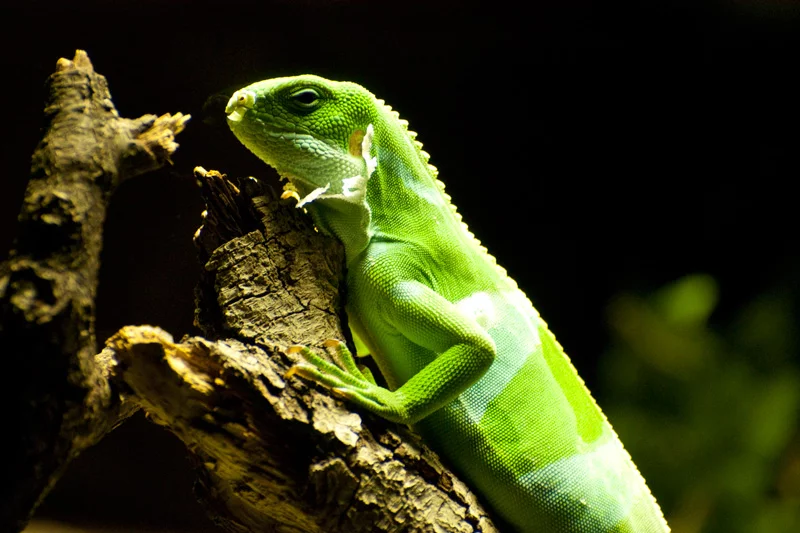
Unlike snakes, another group of squamates, lizards typically have these distinct physical features. Their size, color, and behavior can vary greatly, from tiny chameleons to large iguanas.
Lizards are mainly carnivorous, often eating insects, although some species are omnivorous or herbivorous. Many species can shed their tails to escape predators, a process known as autotomy. They are adaptable to different environments, from deserts to jungles.
Types of Lizard
Lizards are incredibly diverse, with over 6,000 species found across various habitats around the world. Here are some notable types:
- Iguanas (Family Iguanidae): Including the popular green iguana, these are often large and herbivorous, found in tropical areas of the Americas and the Caribbean.
- Geckos (Family Gekkonidae): Known for their ability to climb smooth surfaces, geckos are a diverse group, including the popular leopard and crested geckos.
- Chameleons (Family Chamaeleonidae): Famous for their ability to change color, chameleons are characterized by their zygodactylous feet, long tongues, and swaying gait.
- Monitors (Genus Varanus): Including the Komodo dragon, monitor lizards are large, intelligent, and often carnivorous, found in Africa, Asia, and Oceania.
- Skinks (Family Scincidae): Skinks have smooth, shiny scales and a streamlined body, making them one of the most diverse families of lizards.
- Anoles (Genus Anolis): Notable for their bright dewlaps (throat fans) used in communication, anoles are often found in the Americas and the Caribbean.
- Bearded Dragons (Genus Pogona): Popular pets, they are known for their beard-like throat pouches and docile nature.
- Gila Monsters and Beaded Lizards (Family Helodermatidae): Known for being the only venomous lizards native to the United States.
- Agamas (Family Agamidae): These are often brightly colored lizards, found in Africa, Asia, and a bit of Southern Europe.
- Tegus (Genus Tupinambis): Large, intelligent lizards from South America, known for their varied diet and adaptability.
Each of these lizard types exhibits unique adaptations and behaviors, reflecting the incredible diversity and evolutionary adaptability of this group of reptiles.
Characteristics of Lizard
Lizards, a diverse and widespread group of reptiles, exhibit a range of characteristics that vary widely among different species. Some common traits are generally observed across various lizard species:
- Ectothermic: Like all reptiles, lizards are cold-blooded, or ectothermic, meaning they rely on external sources of heat to regulate their body temperature.
- Scaly Skin: Lizards have scaly skin, which is usually dry and does not allow them to breathe through their skin like some other reptiles.
- Tail Autotomy: Many lizards can shed their tails as a defense mechanism when threatened (autotomy). The tail can regenerate, but it’s often shorter and differently colored.
- Limb Structure: Most lizards have four well-developed limbs, each with five toes, but there are exceptions like legless lizards which resemble snakes.
- Diverse Size and Shape: Lizards vary greatly in size and shape, ranging from a few centimeters in small geckos and chameleons to over 3 meters in the case of the Komodo dragon.
- Diet: Most lizards are carnivorous, primarily feeding on insects, although some larger species may hunt small mammals, birds, or other reptiles. There are also herbivorous species, like iguanas.
- Reproduction: While most lizards lay eggs, some species are capable of live birth. Egg-laying species often bury their eggs in safe, warm locations.
- Sensory Abilities: Lizards generally have good vision, which is important for hunting and navigating their environment. Many species also have a keen sense of smell.
- Habitats: They are found in a wide range of habitats, from deserts and forests to grasslands and urban areas. Some are arboreal (tree-dwelling), while others are terrestrial or burrowing.
- Defensive Mechanisms: Apart from tail shedding, some lizards have other defense strategies like camouflaging, hissing, biting, and in some species, venom.
- Coloration and Patterns: Lizards exhibit a wide array of colors and patterns, which can be used for camouflage, thermoregulation, or signaling to other lizards.
These characteristics underscore the adaptability and ecological diversity of lizards, allowing them to occupy various ecological niches around the world.
Importance of understanding their differences
Understanding the differences between geckos and lizards is important for several reasons:
- Biodiversity and Ecology: Recognizing the distinctions helps in understanding the biodiversity of reptiles and their specific ecological roles. For instance, geckos are often nocturnal and play a key role in controlling insect populations at night, while many lizards are diurnal and impact different parts of the ecosystem.
- Conservation Efforts: Different species have unique habitat requirements and threats. Knowledge of their specific characteristics aids in conservation efforts, ensuring that each species gets the appropriate protection and habitat management.
- Scientific Research: Studying their differences can lead to discoveries in various scientific fields. For example, the unique adhesive properties of gecko feet have inspired advancements in materials science.
- Pet Ownership: For pet owners, understanding the differences is crucial for proper care. Geckos and lizards have different dietary, environmental, and behavioral needs.
- Pest Control: In some regions, encouraging the presence of geckos can be beneficial for natural pest control, as they feed on insects that might be considered pests.
- Medical and Pharmaceutical Research: The study of lizard and gecko biology has potential implications in medicine. For instance, the regenerative abilities of some lizards could offer insights into human tissue regeneration.
Distinguishing between geckos and lizards enhances our understanding of their role in the ecosystem, supports conservation and scientific research, and informs both pet care and broader applications in various fields.
Comparison table of Gecko vs Lizard
Here’s a comparison table highlighting the key differences between Geckos and Lizards:
| Feature | Gecko | Lizard |
|---|---|---|
| Family | Gekkonidae | Numerous families (e.g., Iguanidae, Varanidae) |
| Activity Time | Mostly nocturnal | Mostly diurnal, varies by species |
| Vocalizations | Known for vocalizations, such as chirping | Generally quieter, less vocal |
| Adhesive Pads | Have adhesive pads on feet for climbing | Lack adhesive pads, have claws for grip |
| Eyes | Large and sensitive, adapted for night vision | Size and sensitivity vary, most have movable eyelids |
| Tail Regeneration | Many can regenerate tails, but not all | Common in many species |
| Diet | Primarily insectivores | Varied: insectivores, omnivores, herbivores |
| Habitat | Wide range, often found in warm regions | Extremely varied, from deserts to forests |
| Size | Generally small to medium-sized | Ranges from very small to quite large |
| Skin | Soft, often with a velvety texture | Varies, often scaly |
| Defense Mechanisms | Some can produce a sticky secretion for defense | Some can change color, detach tails, or have spiny scales |
This table provides a general overview. It’s important to note that there are exceptions within each group due to the vast diversity within the lizard category.
Habitat and Lifestyle
The habitat and lifestyle of geckos and lizards vary greatly due to the diversity within each group. Here’s an overview:
Geckos
Habitat:
- Tropical and Subtropical Regions: Most geckos thrive in warm climates, including rainforests, savannas, and deserts.
- Urban and Residential Areas: Some species, like the common house gecko, are often found in human dwellings, living on walls and ceilings.
Lifestyle:
- Nocturnal: Many geckos are active at night, hunting for insects and other small invertebrates. Their eyes are well-adapted to low-light conditions.
- Climbing Ability: Thanks to their adhesive toe pads, geckos can climb smooth surfaces, aiding in their ability to navigate various terrains and evade predators.
- Vocal Communication: Unique among most lizards, geckos use vocalizations for communication, especially during mating or territorial disputes.
Lizards
Habitat:
- Diverse Environments: Lizards inhabit a wide range of environments, from hot deserts to tropical rainforests, temperate woodlands, and even urban settings.
- Adaptability: Different species have adapted to various climates and terrains, including trees (arboreal), ground (terrestrial), and even water (semi-aquatic).
Lifestyle:
- Diurnal and Nocturnal: While many lizard species are active during the day, some are nocturnal, especially in hot desert environments.
- Diet: Lizards have varied diets; some are insectivores, others are herbivores, and a few are omnivores. Large species may hunt small mammals or birds.
- Social Behavior: Some lizards are solitary, while others, like iguanas, may gather in groups, especially during breeding seasons.
Both geckos and lizards have evolved a wide range of adaptations to thrive in their specific environments. This adaptability has contributed to their success as a group, allowing them to colonize diverse habitats across the globe.
Diet and Nutrition
The diet and nutrition of geckos and lizards vary significantly depending on the species and their natural habitats. Here’s a general overview:
Geckos
- Insectivorous: Most geckos primarily feed on insects such as crickets, moths, and beetles. Their diet makes them natural pest controllers, especially in tropical climates.
- Fruits and Nectar: Some species, particularly those in the genus Phelsuma (Day Geckos), also consume fruits, nectar, and pollen, supplementing their insect diet.
- Small Invertebrates: Larger gecko species may also eat small invertebrates and, occasionally, small vertebrates like small lizards or nestling birds.
- Pet Geckos: In captivity, pet geckos are often fed a diet of commercially available insects, like crickets and mealworms, sometimes supplemented with fruit-based gecko diets.
Lizards
- Varied Diet: Lizard diets are highly diverse. While many are primarily insectivorous, consuming a wide range of insects, others have more specialized diets.
- Herbivorous Species: Some species, like the Green Iguana, are primarily herbivorous, feeding on leaves, flowers, and fruits.
- Carnivorous Species: Larger lizards, such as monitor lizards, can be carnivorous, eating rodents, birds, eggs, fish, and even other lizards.
- Omnivorous Species: Some lizards, like certain skinks and bearded dragons, have an omnivorous diet, consuming both plant material and animal-based food.
The diet of both geckos and lizards is closely linked to their ecological niche. They play vital roles in controlling insect populations and, in turn, serve as prey for larger animals, contributing to the ecological balance. In captivity, it’s crucial to mimic their natural diet as closely as possible to ensure their health and well-being.
Reproduction and Lifespan
Reproduction and lifespan in geckos and lizards vary significantly among species, reflecting their adaptation to different environments and ecological niches.
Geckos
Reproduction:
- Egg Laying: Most geckos lay eggs. Some species lay hard-shelled eggs, while others lay soft-shelled eggs.
- Parthenogenesis: Certain species, like the Mourning Gecko, are capable of parthenogenesis, a form of asexual reproduction where females produce offspring without male fertilization.
- Breeding Cycles: The breeding cycle can vary, with some species breeding year-round and others having specific breeding seasons.
Lifespan:
- Varies Widely: Lifespan depends on the species. In general, smaller species tend to have shorter lifespans, often around 5-10 years.
- In Captivity: With proper care, some species like the Leopard Gecko can live up to 20 years or more in captivity.
Lizards
Reproduction:
- Egg Laying and Live Birth: While most lizards lay eggs, some species give live birth, especially in cooler climates where egg incubation can be challenging.
- Incubation Period: The incubation period for eggs varies greatly depending on the species and environmental conditions.
- Mating Behaviors: Many lizard species display complex mating behaviors, including territorial displays, color changes, and physical combat between males.
Lifespan:
- Highly Variable: Lifespans vary dramatically among lizard species. Small lizards may live only a few years, while larger species like monitors can live over 20 years.
- In Captivity: Like geckos, some lizards can have extended lifespans in captivity due to a controlled environment and the absence of predators.
Both geckos and lizards show a fascinating range of reproductive strategies and life expectancies, which are closely tied to their environmental adaptations and evolutionary history. In the wild, their lifespans are often shorter due to predation, disease, and environmental factors, but in captivity, with proper care, they can live significantly longer.
Similarities of Gecko vs Lizard
Geckos and lizards, despite their differences, also share several similarities, largely due to both being part of the Squamata order of reptiles. Here are a few most important similarities:
- Cold-Blooded: Both geckos and lizards are ectothermic, or cold-blooded, meaning they rely on external sources of heat to regulate their body temperature.
- Reproductive Method: Most species lay eggs, but there are also species within both groups that give live birth.
- Skin Shedding: Both geckos and lizards regularly shed their skin as they grow. This process is known as ecdysis.
- Scales: Both have scaly skin, although the texture and appearance of these scales can vary significantly between species.
- Body Structure: They generally share a similar body structure with a head, torso, four legs, and a tail, although the specific shapes and sizes can vary.
- Predatory Habits: Both are primarily insectivorous, preying on insects and other small invertebrates, though dietary habits can vary with some species being omnivorous or herbivorous.
- Defense Mechanisms: Many species in both groups have developed various defense mechanisms like camouflage, tail autotomy (shedding their tail to escape predators), and hissing or biting when threatened.
- Environmental Adaptation: Both geckos and lizards are adaptable and can be found in a variety of environments, from deserts to jungles, indicating their ability to thrive in diverse conditions.
- Sensory Perception: Both have well-developed senses, particularly their vision, which is crucial for hunting and navigating their environment.
- Role in Ecosystem: They play significant roles in their ecosystems, primarily as predators of insects and other small creatures, and as prey for larger animals.
Understanding these similarities helps in appreciating how geckos and lizards, despite their differences, share common evolutionary traits and ecological roles.
Summary
Geckos and lizards represent the remarkable diversity of the Squamata order. Geckos, with their distinctive vocalizations, adhesive toe pads, and nocturnal habits, contrast with the broader and more varied group of lizards, which display a range of sizes, diets, and habitats.
Both play crucial ecological roles, showcasing nature’s adaptability and evolutionary ingenuity in their respective environments.

